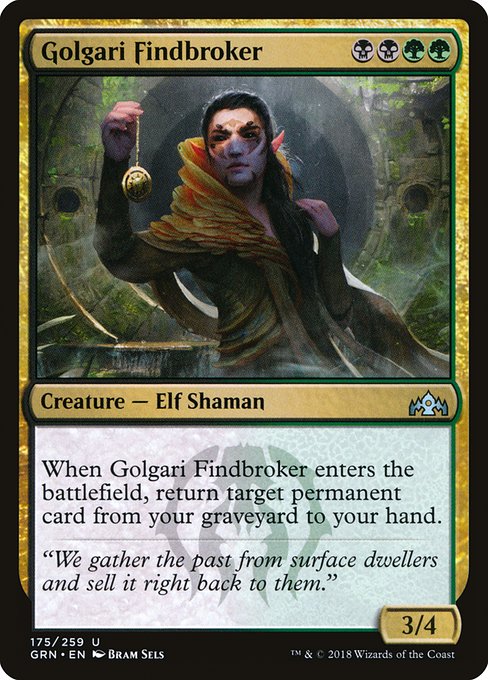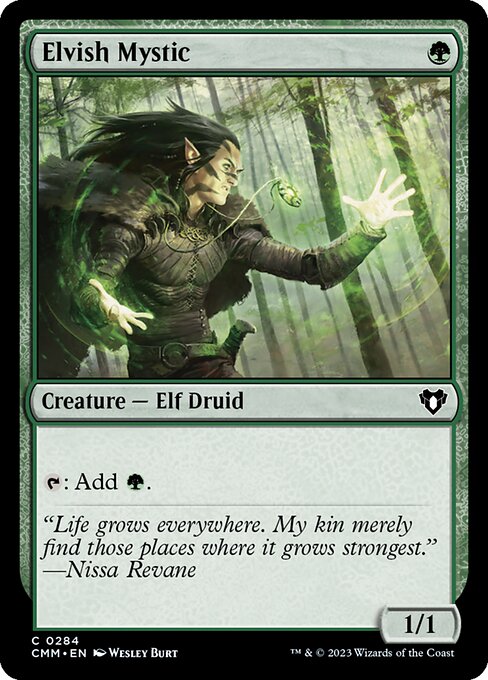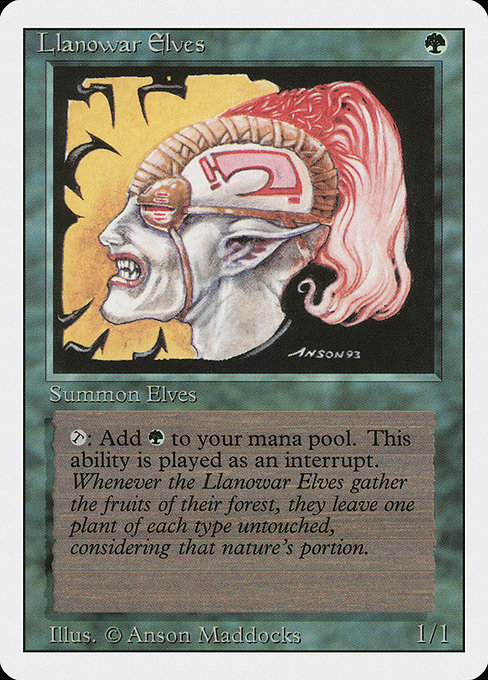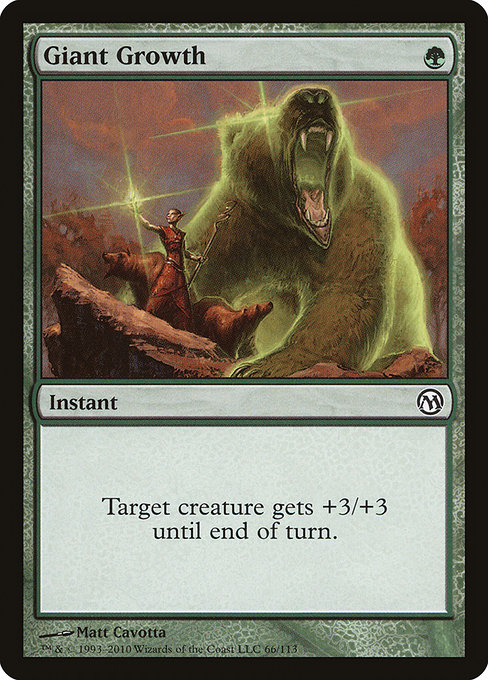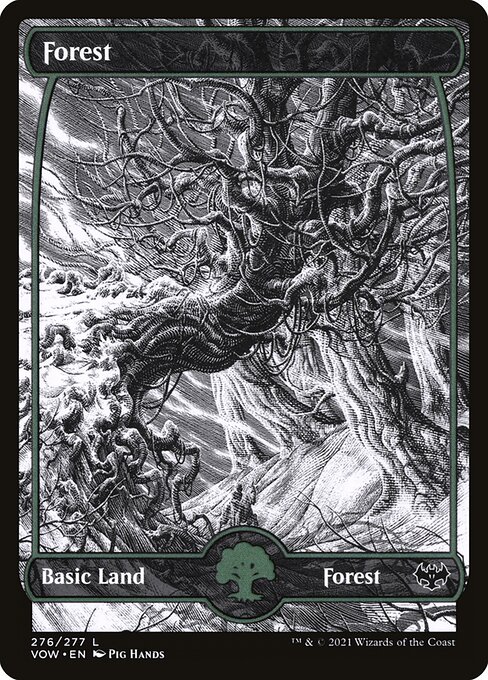
Forest

Guide Sections
Strategy Guide
Last updated 2025-07-06Forest is a crucial mana-producing land for any deck utilizing green mana, providing a consistent source of {G} for casting spells like Giant Growth or summoning creatures. Its only weakness is its inability to produce mana of other colors, limiting its utility in multi-colored decks. It's a fundamental component of nearly every green-based archetype.
The Forest card is a basic land. Its only ability is to tap to add one green mana ({T}: Add {G}). This means that when you tap a Forest, you can use its ability to add one green mana to your mana pool. This mana can then be used to cast spells and activate abilities that require green mana. The Forest's ability is a static ability, meaning it doesn't use the stack and is always active. There are no special timing restrictions on tapping a Forest for mana; it can be done at any time you have priority.
Forest, like other basic lands, cannot be countered. It remains in play until it's removed through effects that destroy lands, such as Earthquake or Stone Rain. It's important to note that effects which prevent you from tapping lands will also prevent you from utilizing Forest's ability to generate mana. For example, a card that states "You may not tap lands to add mana to your mana pool" would effectively shut down your ability to utilize Forest. Conversely, effects that allow you to tap multiple lands simultaneously do not alter the fact that you may only gain one green mana from each Forest. Having multiple Forests simply gives you more green mana generating capability. Many cards and strategies heavily rely on having sufficient amounts of Forest to fuel green spells, including powerful creatures such as Giant Growth targets and ramp spells like Rampant Growth.
Forests are fundamental to any deck that utilizes green mana. Their strategic application is incredibly straightforward: they provide the necessary green mana to cast spells. This seemingly simple function is crucial for a vast array of decks.
Any archetype relying heavily on green mana will include a significant number of Forests. This includes aggro decks like Mono-Green Stompy that prioritize fast, aggressive creatures, midrange strategies that utilize a balance of creatures and removal spells like Abzan Midrange, and even control decks like Selesnya Tokens that aim to stall the opponent and eventually overwhelm them. Even decks with only a splash of green will require Forests to enable crucial spells like Collected Company or Genesis Ultimatum.
The role a Forest fills is consistent: mana production. While simple, this role is vital. A lack of Forests leads to mana screw, preventing the player from casting their spells and severely hindering their gameplan. Conversely, a sufficient number of Forests ensures consistent and reliable mana production allowing for optimal gameplay and maximizing the effectiveness of the deck’s strategy.
The Forest is a fundamental card in any deck utilizing green mana. Its simplicity belies its importance; without sufficient mana production, even the most powerful cards remain unplayable. Therefore, deckbuilding around Forest primarily revolves around maximizing its utility and minimizing situations where it sits untapped. This means including a sufficient number of Forests to support your mana curve while avoiding flooding your hand with lands that don't contribute to your strategy.
The ideal number of Forests depends heavily on the deck's specific strategy. Aggro decks, aiming for quick victories, might use fewer Forests, relying more on efficient creatures and ramp effects to accelerate their game plan. Conversely, control decks, focusing on card advantage and late-game power, will likely require a larger number of Forests to support the casting of more expensive spells. Cards like Rampant Growth and Cultivate can help mitigate the risk of mana screw by tutoring for additional Forests, ensuring consistent mana production throughout the game.
Synergies with Forest are numerous and implicitly tied to any green card that requires green mana to be played. Cards like Giant Growth and other green-based enchantments benefit directly from the mana provided by Forest. Similarly, any creature with activated abilities requiring green mana will rely on Forest for activation. Creatures with abilities like "Whenever ~ attacks, add {G}" synergize exceptionally well, as they can generate extra green mana to cast more spells.
Finally, strategies focused on +1/+1 counters find a natural home alongside sufficient Forests. Cards like Rancor and Overrun thrive in a mana-rich environment. Combining these with creatures that benefit from +1/+1 counters allows for explosive plays fuelled by a steady supply of green mana from your Forests.
Forest's viability is entirely dependent on the format's reliance on green mana. As a basic land, its power level is inherently simple: it produces one green mana. This makes it a staple in any format that utilizes green mana, regardless of complexity.
In Standard, Historic, Pioneer, and Modern, Forest remains an essential component of nearly every green deck. Its consistent mana production is crucial for casting spells and activating abilities. Decks such as those featuring Collected Company or Uro, Titan of Nature's Wrath (in formats where it's legal) heavily rely on a solid mana base including numerous Forests. Without sufficient Forests, green strategies simply cannot function effectively.
Commander is another format where Forest shines. Many Commander decks utilize multiple colors and often feature high mana costs. A large number of Forests are necessary for these decks to function consistently, even those with mana ramp elements like Rampant Growth or Cultivate. The sheer number of cards and the potential for high mana costs in Commander makes Forest's consistent green mana production invaluable.
In formats with limited card pools, such as Pauper, Forest's importance remains unchanged. The only exception might be formats that specifically restrict the number of basic lands allowed, although this is quite rare.
The Forest's impact is most felt in scenarios requiring green mana. One example would be a board state where a player controls a Giant Growth and a 3/3 creature. Tapping the Forest to add green mana allows them to cast Giant Growth, boosting their creature's power and toughness to a formidable 6/6, significantly improving their board presence and offensive capabilities. This could easily swing the game in their favor, especially if the opponent lacks immediate removal.
Another impactful scenario involves ramp strategies. A player with several Forests, along with cards like Rampant Growth or Sakura-Tribe Elder, can accelerate their mana development significantly. This enables them to play powerful, high-mana-cost creatures or spells earlier than their opponent, creating a decisive advantage. For example, having three Forests in play would allow a player to cast Sakura-Tribe Elder on turn 3, which can subsequently fetch yet another Forest, setting the player up to play a 5-mana creature on turn 5, a turn ahead of schedule if they solely relied on natural mana production.
Finally, a less obvious but equally important situation showcases the Forest's role in enabling consistent casting of spells with green mana. A player relying on a suite of green spells, such as Elvish Archdruid and other green-mana-cost creatures, would find themselves severely hampered without a reliable source of green mana. The Forest ensures that the player can consistently cast these crucial cards, allowing them to effectively develop their game plan and execute their strategy.
The card Forest, a basic land that taps for one green mana ({T}: Add {G}), has a history as long and deep as Magic: The Gathering itself. While it doesn't have a single "release date" in the way a new card might, its presence has been constant since the game's inception. Every core set, expansion, and supplementary product almost always includes a generous number of Forests, reflecting their essential role in playing green-based strategies. Its unassuming nature belies its fundamental importance; without Forests, decks relying on Giant Growth, Llanowar Elves, or any number of powerful green creatures and spells, simply wouldn't function. The artwork has varied across editions, showcasing diverse depictions of lush forests, misty woodlands, and even fantastical overgrown landscapes, each reflecting the artistic style of the set it's included in. These artistic differences, while seemingly minor, contribute to the overall collector value and nostalgic appeal of specific Forest cards from older sets.
Reprinting Forest is a near-guaranteed occurrence for every Magic: The Gathering set. This ubiquity underscores its position as a foundational element of the game. While the card itself remains unchanged functionally, the rarity (always common) and artistic variations across sets make collecting different versions a popular pursuit for many players. Certain versions, particularly those from early sets or with particularly striking art, command a premium in the secondary market, even if their in-game functionality remains exactly the same as a common Forest from the latest set.
The impact of Forest on the game is immeasurable. It's not a card that defines particular metagames or strategies in the way a powerful legendary creature or game-changing spell might, but its consistent presence is a cornerstone of the game's balance and diversity. Green's strength in creature-based strategies and ramp effects relies entirely on access to this fundamental resource. Without the readily available mana provided by Forest and other basic lands, the entire game would be drastically altered. Its simple yet crucial role has defined the landscape of Magic: The Gathering from its earliest days to the present.
The card "Forest" is a basic land, fulfilling its core function of providing green mana. Its flavor text, or lack thereof, is perfectly appropriate for a basic land. The art, while not specified here, would likely depict a generic forest scene, fitting thematically with the established visual language of Forests across Magic: The Gathering. The design is entirely functional; it's a simple, consistent mana-producing land. This simplicity makes it a perfect fit within the Vow set and the larger Magic: The Gathering universe. The card works seamlessly alongside other green cards like Elvish Mystic or Llanowar Elves, providing the necessary mana base to cast those spells. Its common rarity aligns with the expectation of consistently finding basic lands in booster packs, a design choice fundamental to the game's structure. There's no need for flashy design or complex flavor text; its purpose is clear and effectively executed.
The Forest card is exceptionally budget-friendly. As a basic land, it's generally included in booster packs at common rarity, making it one of the cheapest Magic: The Gathering cards available. Essentially, its cost is negligible compared to other cards in a deck. There aren't really "cheaper" alternatives, as any other land providing green mana will cost roughly the same, or more, if obtained through secondary markets. While you might find a single Forest slightly cheaper on online marketplaces due to bulk sales, the price difference is insignificant in the context of a deck's overall cost. For practical purposes, a Forest is as cheap as a basic land can be.
While seemingly simple, the Forest card offers subtle strategic depth beyond its basic mana-producing function. Its value extends beyond simply providing green mana; it forms the backbone of many deck strategies. A critical consideration is its role in ramp strategies, accelerating mana development to deploy powerful high-cost creatures like Ulamog, the Ceaseless Hunger or World Breaker earlier than your opponent anticipates. The abundance of Forests in a deck directly impacts the reliability of these strategies, influencing the consistency of early-game mana production.
Furthermore, the interaction of Forest with cards that care about land types or land count is significant. Decks utilizing cards that benefit from having many Forests in play, such as Overgrowth or Skyshroud Ranger, will gain an advantage through efficient mana generation and synergistic landfall triggers. Conversely, cards that negatively affect Forests should be considered when evaluating opponent decks and crafting strategies for effective counterplay. The seemingly innocuous Forest becomes a key factor in understanding and manipulating the overall game state.
Finally, the longevity of a Forest is crucial. Unlike many other cards, it persists throughout the game, offering consistent mana generation regardless of board state changes. This reliability and resilience make it a fundamental component in any green-based strategy, emphasizing its importance beyond its simple text.
Common mistakes with Forest are surprisingly infrequent, given its fundamental nature. The most common error isn't a misplay of the card itself, but rather a strategic oversight in its utilization. Players, especially newer ones, sometimes neglect to play enough lands, leading to mana screw. This is especially true in green decks, which often rely on high mana costs for powerful creatures and spells like Giant Growth or Overrun. Failing to include a sufficient number of Forests, alongside other lands, cripples a player's ability to cast their spells effectively, severely impacting their game plan. Conversely, while less frequent, flooding – having too many lands in hand and not enough creatures or spells – can also be a significant detriment. While a surplus of Forests might seem beneficial, it merely occupies hand space that could be used for more impactful cards. The ideal balance of lands, including Forests, must be determined based on the specific deck's mana curve and overall strategy.
Forest is a fundamental card in any green-based deck. Its value lies in its consistent ability to produce green mana ({G}), crucial for casting spells and activating abilities of creatures and other cards that rely on green mana. Essentially, it's a necessary component for almost any deck utilizing green mana, acting as the engine for playing cards such as Giant Growth or Elvish Archdruid. Play Forest whenever you need to generate green mana to cast spells or activate abilities. Its simple yet powerful effect makes it a staple in any green deck, regardless of strategy.
